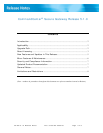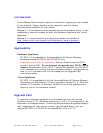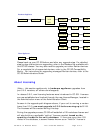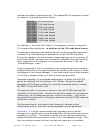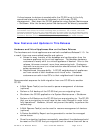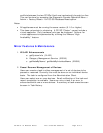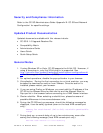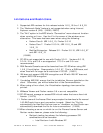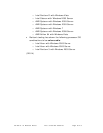
CC-SG 5.1.0 Release Notes Doc. #
255-80-0005-00 Page 4 of 9
created and added to the base license. The created Add-On license is rounded
up, based on the following license levels:
CCL-64 64 node license
CCL-128 128 node license
CCL-256 256 node license
CCL-512 512 node license
CCL-1024 1024 node license
CCL-2048 2048 node license
CCL-4096 4096 node license
CCL-8192 8192 node license
For example, if there are 400 nodes in the database, an add-on license for
512 nodes will be established – in addition to the 128 node base license.
The process of upgrading and establishing the license(s) has been designed in
a manner that is as seamless as possible for current CC-SG customers.
During the upgrade, the new firmware release captures the unit’s unique ID
and current nodes – and uses this information to establish the new license(s).
Upon completion of the upgrade, the licenses can be found in the new
“License Manager” menu.
Once the upgrade to 5.0.0 is completed, your node licenses have now been
established and the unit’s node access will be limited to the amount of nodes
as displayed in the License Manager. If you need to add to your node licenses
in the future, please contact your Raritan sales representative.
Clustered Licensing: In a clustered configuration, in which a 2nd CC-SG
serves as a failover unit to a primary unit, ‘Cluster’ licenses are shared.
Examples of CC-SG part numbers for ordering a clustered solution include
CC-2XE1-512 and CC-2XE1-1024.
The base and add-on licenses are bound to the two CC-SG node host IDs
identified in the license files. License files should be added to, and features
checked out, on the designated primary node in the cluster. They will be
automatically transferred to the backup node when the two CC-SG nodes are
joined into a cluster.
The licenses allow for the cluster to be temporarily deleted so that
maintenance activity, such as firmware upgrades, may be performed.
Important: It is highly recommended that upgrading and/or license
management is performed at a pre-arranged time, during which users are not
accessing the system. The system requires that the required licenses are
added and features are activated in order to be in the operational state. Until
that time system access is limited, devices and nodes are not available.



